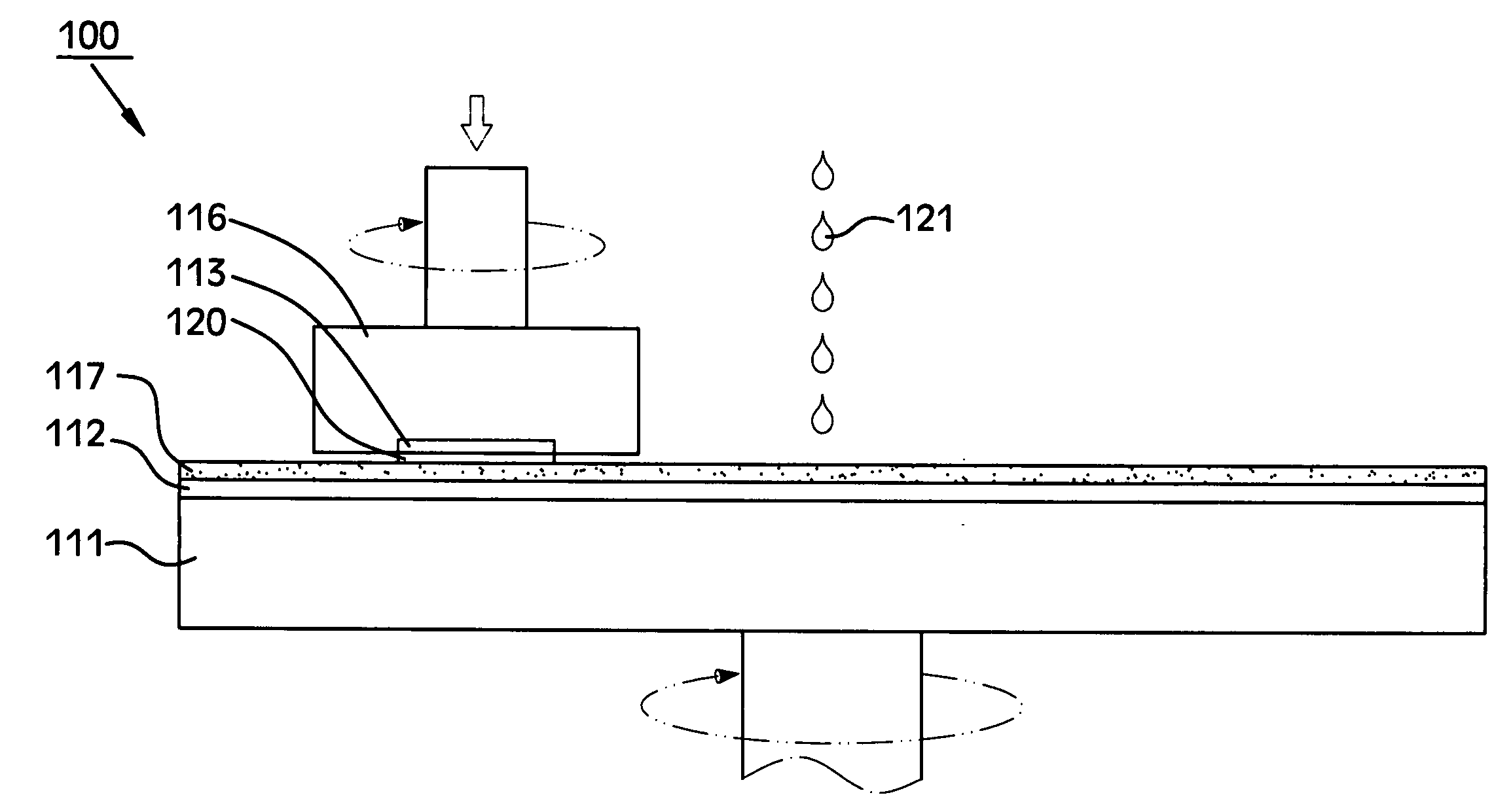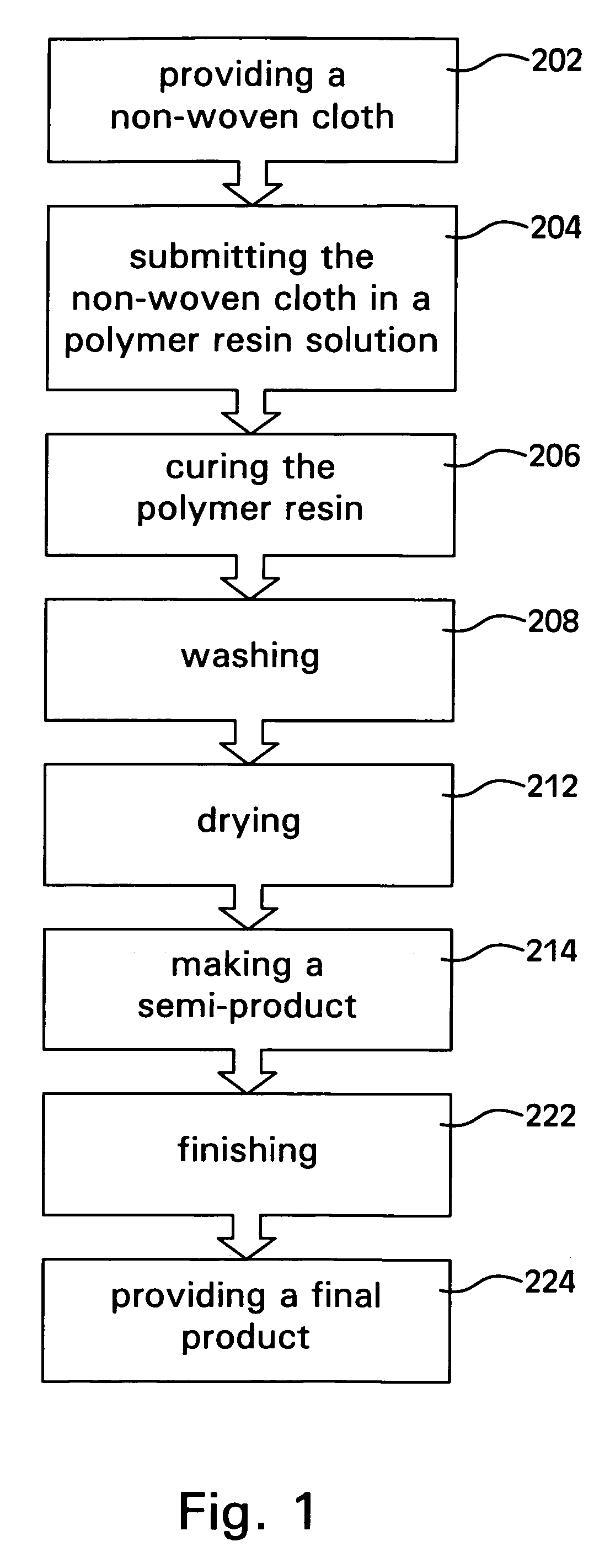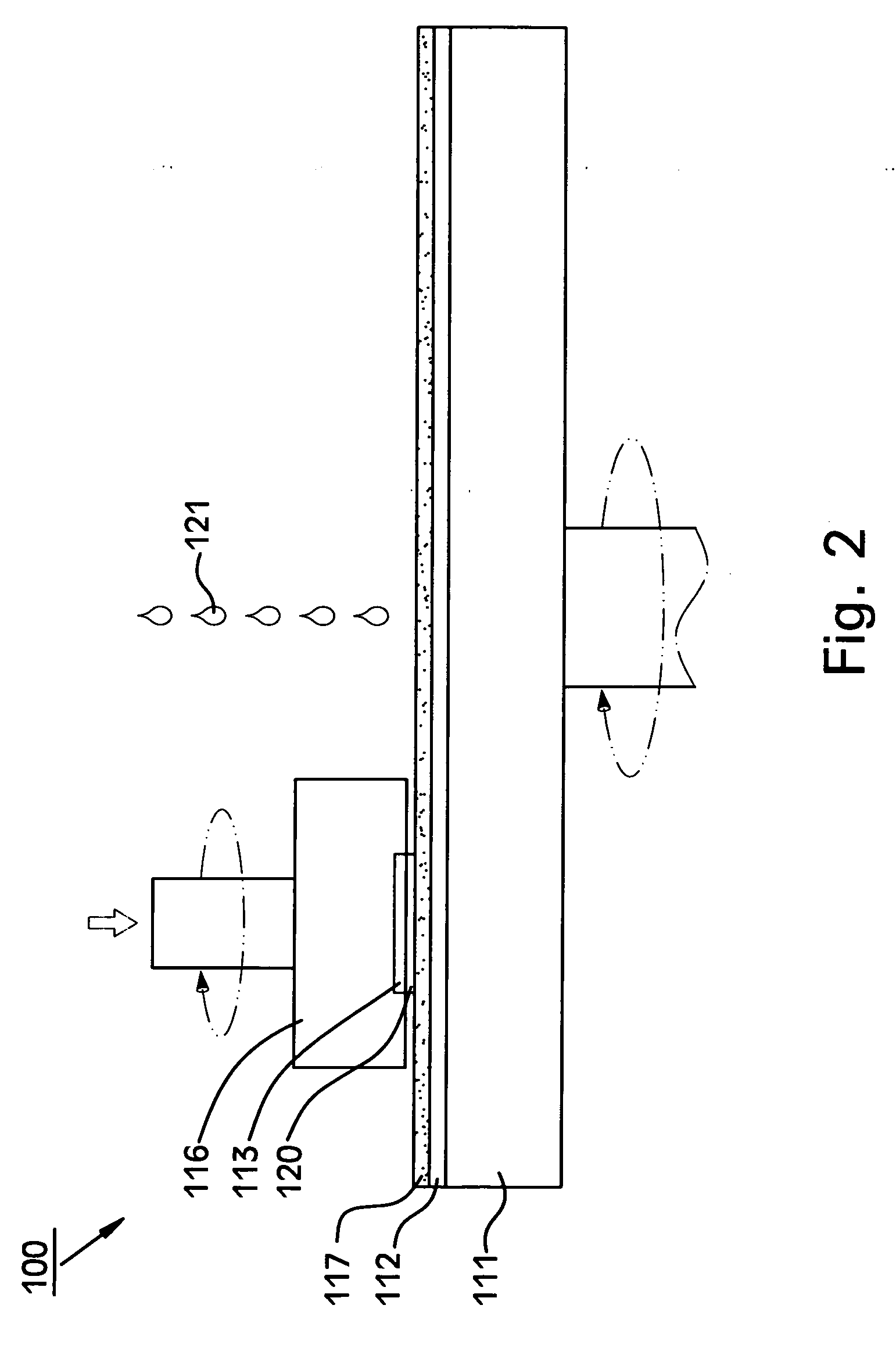Polishing pad and method for manufacturing the polishing pad
a technology of polishing pads and polishing particles, which is applied in the direction of cleaning equipment, synthetic resin layered products, weaving, etc., can solve the problems of inability to effectively remove debris from the workpiece being polished, inability to smoothly flow slurry, and inability to efficiently distribute polishing particles in slurry, so as to eliminate the difference between batches of polishing pads made according to conventional methods
- Summary
- Abstract
- Description
- Claims
- Application Information
AI Technical Summary
Benefits of technology
Problems solved by technology
Method used
Image
Examples
Embodiment Construction
[0018] Referring to FIG. 1, there is shown a method for manufacturing a polishing pad according to the preferred embodiment of the present invention.
[0019] At step 202, a non-woven cloth is provided. The non-woven cloth is made of a plurality of fibers by stitching. The fibers may be single-component fibers or composite fibers. The single-component fibers may be made of polyamide resin, polyester resin, poly-acrylic resin or polyacrylonitrile resin. The composite fibers may be made of any combination of polyamide resin, polyester resin, poly-acrylic resin or polyacrylonitrile resin. In the preferred embodiment, the non-woven cloth is made of composite fibers of 3 denier by needle punch. The composite fibers include 70% of nylon and 30% of polyethylene terepthalate (“PET”). The thickness of the non-woven cloth is 2.25 mm, the density is 0.22 g / cm3, and the length-specific weight is 496 g / m2.
[0020] As step 204, the non-woven cloth is submerged in a polymer resin solution. Thus, the ...
PUM
| Property | Measurement | Unit |
|---|---|---|
| diameters | aaaaa | aaaaa |
| diameters | aaaaa | aaaaa |
| density | aaaaa | aaaaa |
Abstract
Description
Claims
Application Information
 Login to View More
Login to View More - R&D
- Intellectual Property
- Life Sciences
- Materials
- Tech Scout
- Unparalleled Data Quality
- Higher Quality Content
- 60% Fewer Hallucinations
Browse by: Latest US Patents, China's latest patents, Technical Efficacy Thesaurus, Application Domain, Technology Topic, Popular Technical Reports.
© 2025 PatSnap. All rights reserved.Legal|Privacy policy|Modern Slavery Act Transparency Statement|Sitemap|About US| Contact US: help@patsnap.com



